PCA Articles
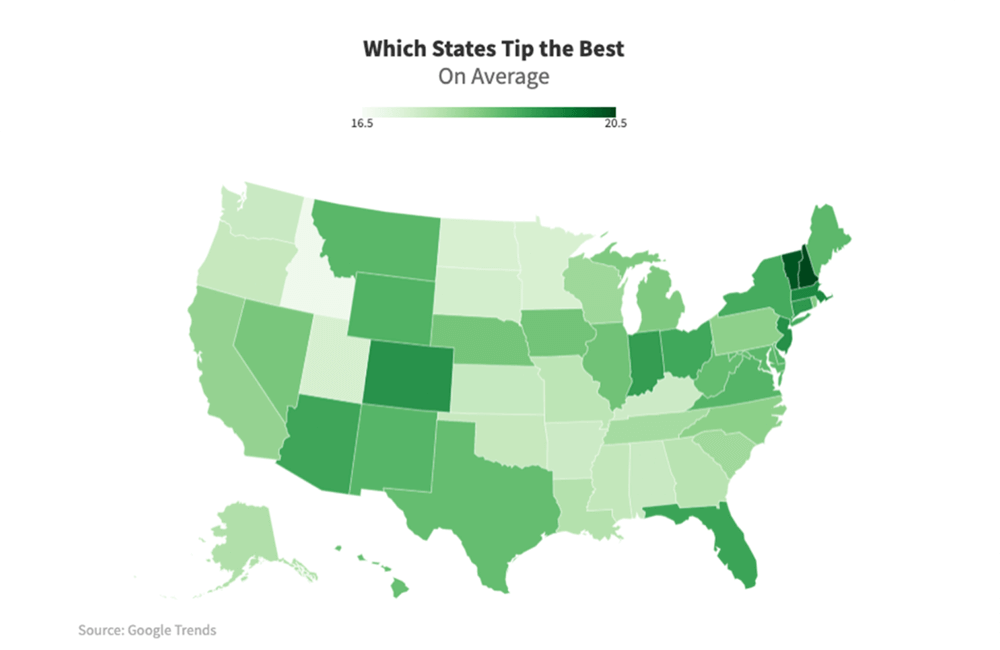
Hiring, Recruiting and Retention
One Solution For Three Problems
Collecting more tips can solve three primary pain points of the painting industry, specifically those within the recruiting, hiring and retention processes.
Tipping has been and is still a controversial topic for many people and companies. The practice of the consumer giving gratuity in addition to the money that the employee gets from their employer has a surprisingly long and complex history.
The tradition of tipping originated in the Medieval Period with servants receiving extra money from presiding nobles within the master-serf relationship. Wealthy Americans discovered the tradition while on vacation in Europe and brought the tradition to the United States, where it quickly became a hated custom and was branded as “un-American and undemocratic”.
After much debate and consumer pushback, the custom of tipping gained popularity as restaurateurs realized that it offered unique benefits. Tipping both subsidized employees’ pay with extra money provided directly by guests and allowed owners to keep their costs down significantly.
Fast forward to today: employers are now only required to pay tipped workers a wage that equals the federal minimum wage when the average tip amount is taken into account. In the United States, only seven states mandate that all workers, regardless of tips, are paid the full state minimum wage.
Stats On Tipping
The restaurant industry is synonymous with tipping. However, just like in other historical industries, it is common to tip other types of service providers. Employees within the hospitality, spa, transportation, residential cleaning, and hair salon industries all commonly receive customer tips as part of their jobs.
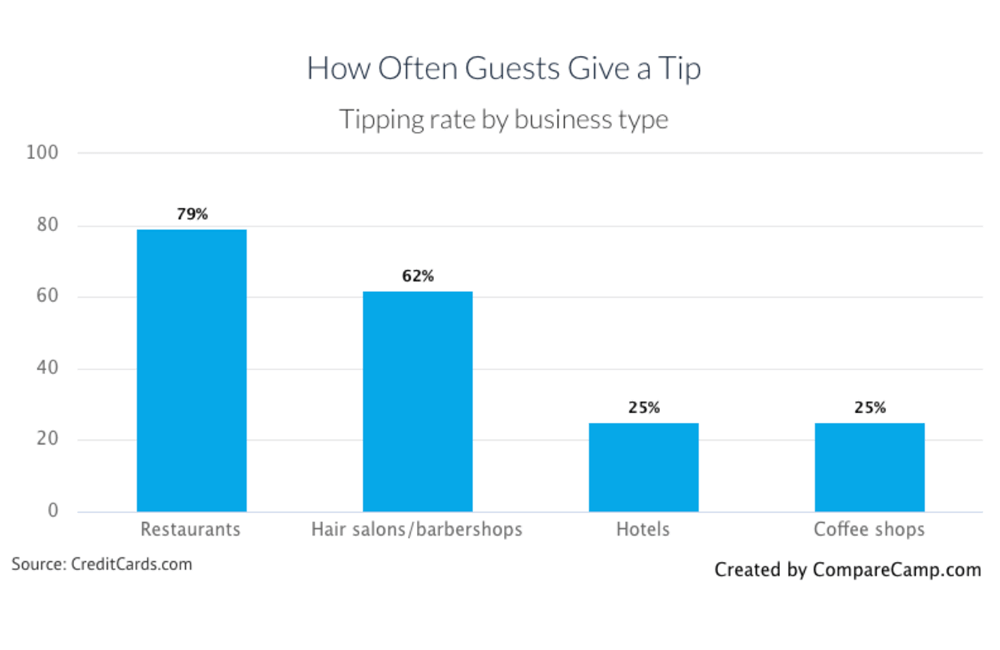
Although tipping rates are not universal across the country, the standard tipping percentage for service is 15%. The Northeast has the highest average tipping percentages with New Hampshire leading the charts at 20.47%.
Allset, a software company, has designed a text messaging experience specifically for increasing tips for service businesses. Its technology helps increase revenue by sending customized and personalized text messages requesting a tip to customers once a service is completed.
“We believe service businesses deserve tools that help their workers and company earn more,” says CEO Justin Clegg. “Solid communication and marketing are foundational for businesses to generate revenue. Through Allset’s communication platform, businesses are generating tips of $30 on average and increasing tips received by 300%.”
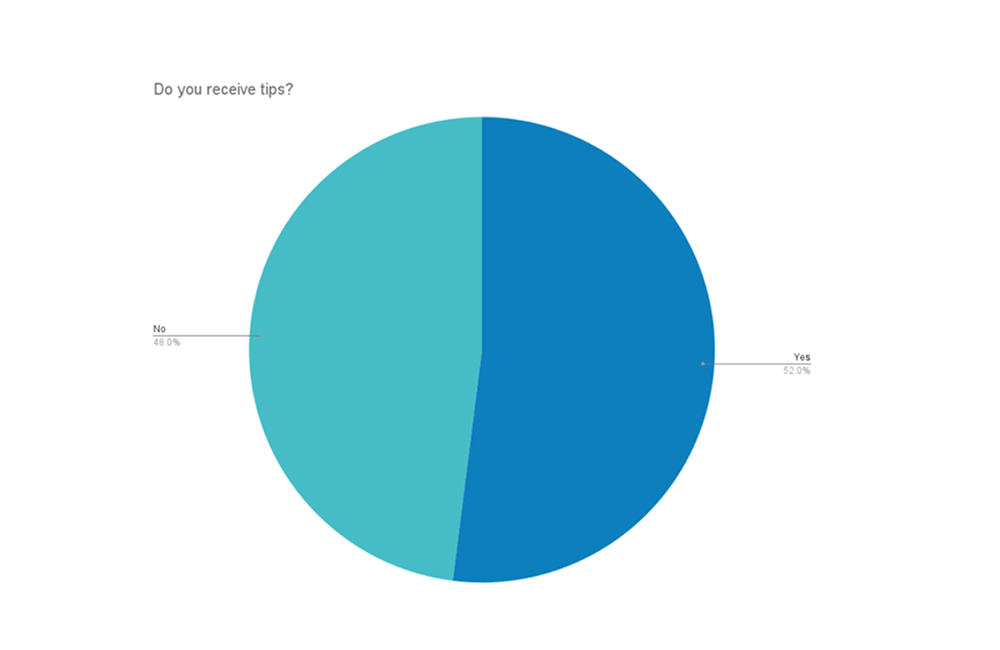
According to a poll by American Painting Contractor, 52% of painting business owners said they receive tips while 48% said they did not.
Allset has helped the painting industry earn more tips with a conversion rate of 9% and an average tip-per-job of $107. And this is just the beginning.
The Value Of Earning More Tips
Tips are making it easier for business owners to pay their employees more without costing them time and money. This is just what every business owner wants to hear, right? Tips helps with recruiting, hiring and retaining employees. Particularly in industries that rely on tips as key benefits for their employees, these three processes typically run into pain points directly related to employee pay.
Recruitment
Recruitment is the first step in attracting new employees for a company or organization. Recruitment can typically take a long time and is especially needed when a company is experiencing significant changes. Although some shifts happen as a result of market forces, others can occur due to on-the-job accidents, unexpected retirements, or health issues that various employees experience.
Attracting the right candidates for your company can feel overwhelming. By its very nature, recruitment often requires employers to write up formal job descriptions, weed out weak candidates, create paper and online applications, and showcase company benefits in a competitive way.
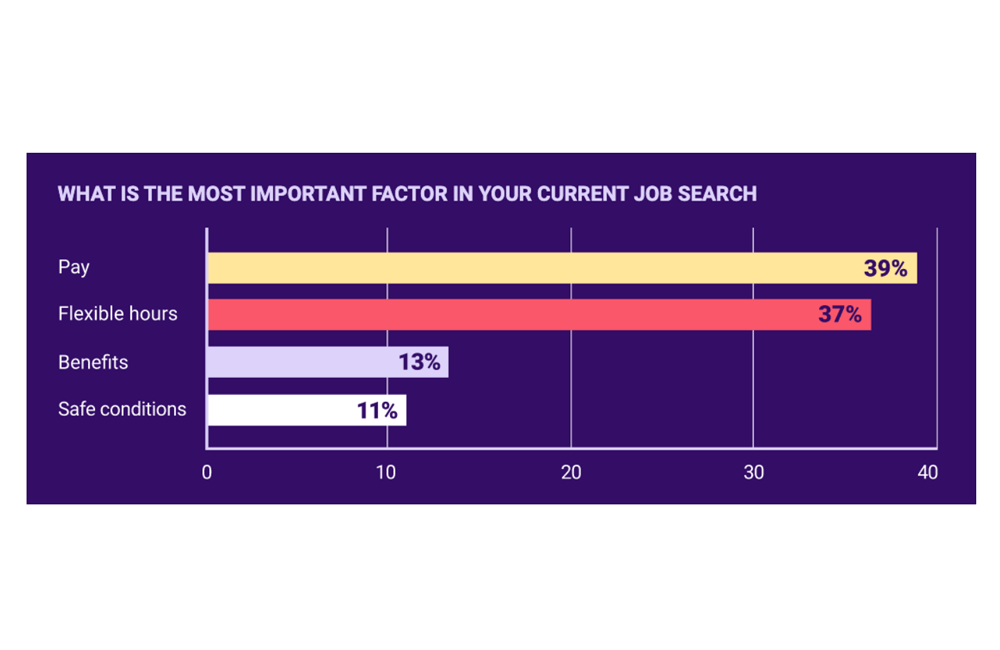
The most important factor for job seekers (and the item that catches the most attention) is a better salary. However, good pay ranges differ by industry and location. To figure out the most competitive pay range for your open positions, you may want to use free online tools, including the wage tool and Monster’s free salary tool. Don’t forget to include other benefits available at your company as part of the perks listed in your job listing.
If the pay range you offer is lower or in direct competition with other job offers, the prospect of earning tips on top of their base pay can incentivize applicants and make your company stand out from the crowd. Salary and benefits aren’t just the most important factor for job seekers, but the lack of them is also one of the main reasons candidates drop-off during the hiring process.
Hiring
Hiring is the last step within the recruitment process. Specifically, hiring refers to the actual engagement of a person’s services for a particular job at a certain fee. Typically, this candidate is chosen from a pool of other applicants and is given a contract with information about the job requirements and benefits.
Recent studies have shown a 20% increase in job seeker drop-off throughout the hiring process. The last thing most businesses want is to lose their top-choice candidate and have to start the recruitment process all over again. Although other candidates may still be waiting in the wings, there is always the awkward moment of having to return to the previous applicant and let them know they are wanted for the position after all. This approach also runs the risk of other candidates having found different job roles in the meantime. To ensure you don’t lose the candidate you want to hire, it’s important to discuss salary and benefit expectations up front. Setting up appropriate expectations regarding pay and benefits can mean the difference between a satisfied new employee and an unhappy one.
Many service industries are reluctant to pay an employee more money because it affects their bottom line. Tips, however, counteract the cost and provide a benefit to both employer and employee. Even with the benefit to employees some employers, especially those in the painting industry, hesitate to request tips from their customers.
Jen, owner of Painting by Jen based out of Iowa is one of those in the painting industry who was leary of asking for tips from customers but decided she would give it a try.
“I sat down with my employees and told them, we are going to just try it,” said Jen.
Within 4 days, Painting by Jen received their first tip. “When we got our first tip it was so exciting!” said Jen. “It’s motivating, it’s an extra “thank you” for my employees. I was convinced, this is going to work.”
Painting By Jen has been with Allset for just a little over a month and says she has been “surprised because people are okay with tipping, they want to do it, this is their choice, that’s a huge added benefit.”
Creating “a new age in painting” is one way Painting by Jen has been able to recruit and keep top-notch candidates throughout the hiring process. The company provides freedom of schedule, bonuses, 401k match.
Jen has hired two employees since signing up for Allset.
“I love adding tips onto the benefits package,” says Jen. “It’s a big deal when I am hiring employees, so I play that up.”
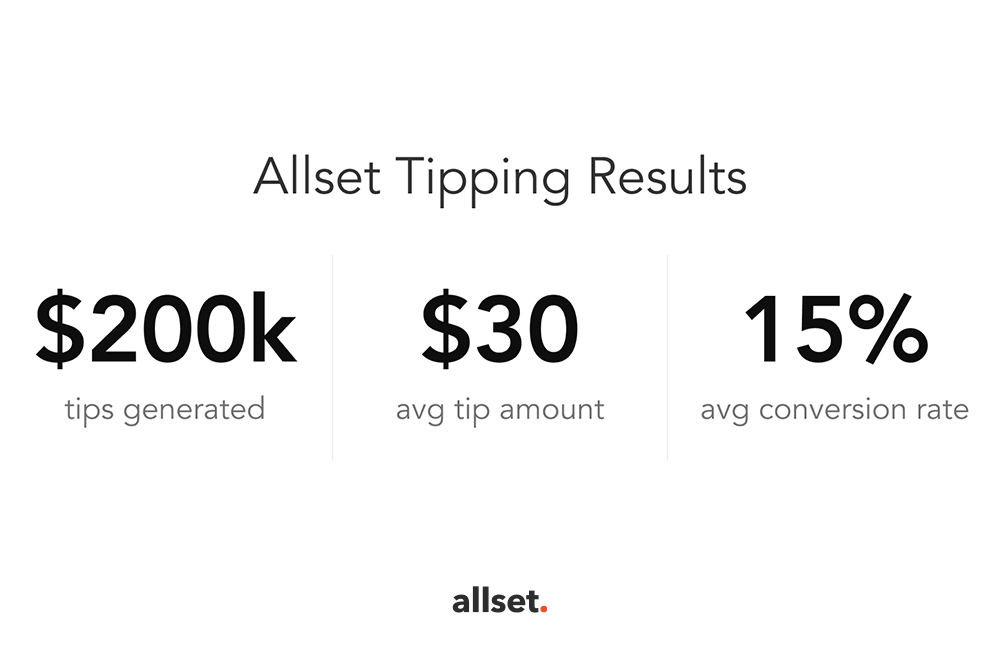
Allset tipping has been helping service industries generate more revenue helping with hiring and retention. Many employees rely on the tips that customers provide. Most employers also lean on tips as it encourages quality work and helps retain skilled employees over time.
Retention
Retention is the ability of a company or organization to keep employees under contract. Having a solid retention strategy is imperative for achieving a more stable, productive workforce that can consistently operate at a high level.
Ultimately, the key to a high retention rate is knowing why employees stay or leave when advancing through the recruitment, hiring, and employment process. Understanding that can save a company hundreds of thousands of dollars in the long term.
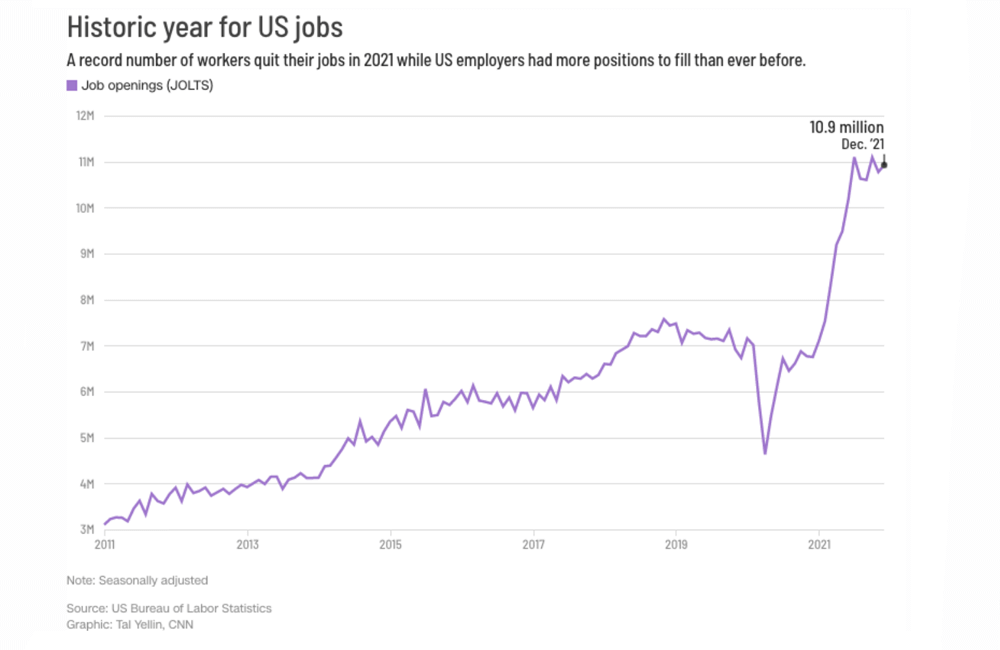
Hiring and training new employees is expensive. It takes 90% of an existing worker’s salary to replace employees effectively. For more tenured employees, the cost companies bear can increase to as much as 200% of the existing worker’s paycheck. Since February 2022, 4.4 million U.S. workers quit their job, a number that is much higher than the 3.4 million that quit the year prior. This “Great Resignation” created a record number of positions that needed to be filled in 2021. In total, 75.3 million workers were hired in 2021 while 68.9 million were categorized as “separations,” which essentially means they were laid off, quit, or discharged. Out of those separations, 47.4 million were voluntary terminations of employment, according to an article published by CNN Business.
Workers primarily left their jobs for cash incentives, better pay, or improved benefits. A number of workers also left their job to take care of their families. Solving retention issues can be an expensive and complex problem. Efforts to address it should start at the very beginning: attracting the right candidates for your open positions.
Think of the recruiting process as the first step in a job seeker’s journey. The employee experience is one that can either keep an employee for years or cause them to drop-off relatively quickly. If a company executes on creating a friction-free recruiting and hiring process, then it is highly likely that your employee retention rate will remain high. This is especially true if a company offers incentives, such as cash or better pay, to attract, nurture, and retain employees.
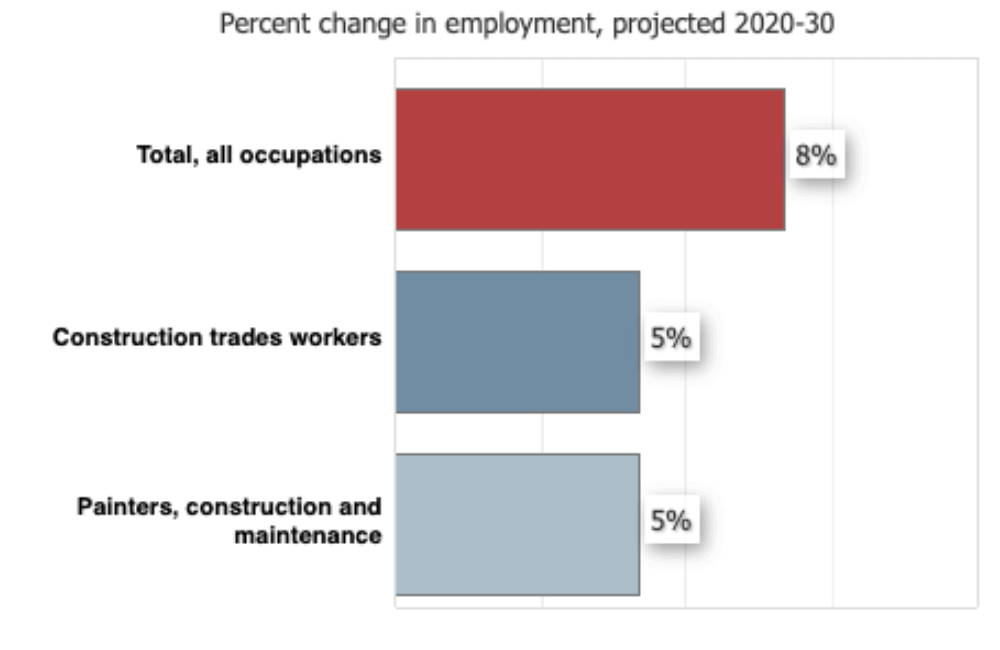
Having looked at retention more closely, what does it mean, then, when painting companies have such a high turnover rate? It probably goes back to a problem with the benefits employees see as lacking within the industry. Still, lots of opportunity remains, which adds new urgency onto solving the issue of low retention in the industry. Despite the high turnover rates, employment growth for painters, construction and maintenance is projected to increase 5% from 2020 to 2030. Although this projected growth rate is slower than the average for all occupations, it still indicates that the painting industry would benefit from more employees, particularly those willing to stick around long term. Tipping is one way to motivate new employees to enter the field and stay once they do.
Why Tipping Matters
Although tipping is not mandatory in the US, it is a way to show gratitude, increase income, help increase positive emotions, and reduce stress, according to an article published by the Association for Psychological Science.
“Anytime we get a tip it shows gratitude,” said Jen from Painting by Jen. “It’s worth it because my employees see the value more when it comes directly from the client instead of a bonus.”
Tipping has been a win-win for many people within the service industries. Automated text messaging requesting tips has made it easy for business owners to receive tips from customers, motivate and retain employees. But what about the customers?
One question many customers ask is “should I tip my service provider?”. The answer is most definitely, yes! Allset is helping eliminate confusion around tipping in a non-intrusive way with automated text messaging.
Text Messaging’s Impact On The Service Industry
Many service industries, other than restaurants, are adopting the use of SMS text messaging to increase tips for their employees and generate more revenue. Texts provide an easy way to send an automatic and customized message to customers requesting a tip.
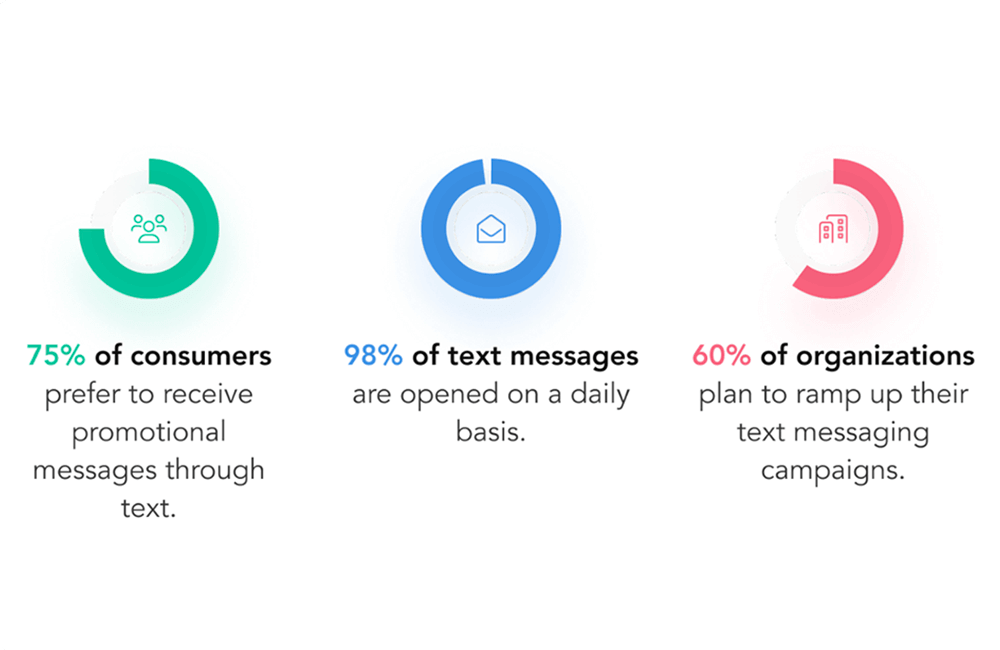
The average person checks their phone 160 times a day. Text messaging is one of the most common ways Americans use their smartphones. In fact, 97% of smartphone owners use texting as the main feature.
Text messaging is also one of the most effective marketing tools to reach customers. Texts have a 98% open rate compared to email marketing that has, on average, a 20% open rate.
Combining text message alerts with reminders to tip provide a reliable way of prompting your customers to reward employees for their good service. Do right by your employees and do your company a favor by avoiding recruiting, hiring and retention problems with more frequent and higher tips.
About The Author

Kydee Jensen is the Content Marketing Specialist for Allset. She has a passion for creating all forms of content with her favorite being video content. She loves strategically helping brands grow by building strong communities around those brands.